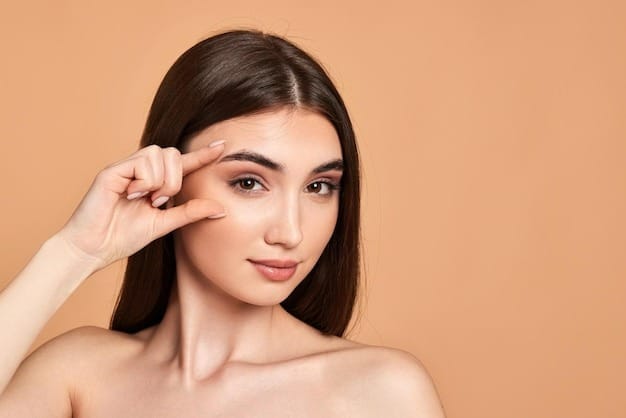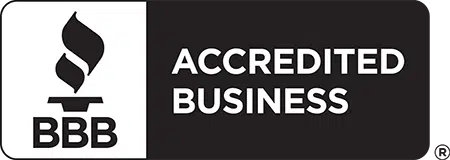A brow lift can rejuvenate your forehead area and raise your eyebrows, giving you a more alert and youthful appearance. The coronal brow lift is one of several techniques available, and choosing the right one depends on factors like how the procedure is done, what you can expect afterward, and how long it takes to recover.
Dr. Andres Bustillo, a facial plastic surgeon with certification from the relevant board, uses his extensive experience to explain the different brow lift options. He provides essential information that can help you determine which method might suit your needs and what results you may anticipate.

Coronal Brow Lift Benefits and Comparisons
- A coronal brow lift effectively reverses signs of aging by repositioning the forehead skin and muscles.
- Compared to other brow lift methods, a coronal lift offers more dramatic and long-lasting results.
- Recovery from a coronal brow lift may be longer compared to less invasive brow lift procedures.
- Patients with significant forehead wrinkles or sagging may find the coronal method more beneficial than alternative techniques.
- The coronal technique may result in a more noticeable scar, which is a consideration when choosing the type of brow lift.
Surgical Approach and Invasiveness
Coronal and Endoscopic Techniques
A coronal brow lift, an extensive brow lift technique, involves an invasive incision across the scalp. It allows for the lifting and reshaping of the forehead but requires a longer healing time. On the other hand, an endoscopic brow lift, a key surgical technique, involves a minimal incision. Small, 4-5 cm incisions are made, enabling the surgeon to lift the brow with less visible scarring and a shorter recovery.
Minimally invasive alternatives, like a temporal brow lift, sometimes require only a little incision. These options focus on simplicity and minimize downtime, although they yield less noticeable outcomes than surgical brow lifts.
Direct and Lateral Techniques
When considering forehead rejuvenation, understanding the type of brow lift and the associated procedures is crucial. The types of brow lifts differ significantly, and each has distinct considerations related to healing and possible scarring. For instance, the direct brow lift technique involves incisions directly above the eyebrow, making it ideal for individuals with frown lines between the eyebrows. This method allows for precise control over the shape and position of the eyebrows.
Moreover, the lateral brow lift, which focuses on lifting the outer edge of the brow, is an effective method for addressing drooping at the outer brow area. It can be an excellent choice for those who seek a subtle lift and a more natural look, with minimal incisions hidden within the hairline.
Selecting the right type of brow lift depends on individual needs and expectations. It’s essential to discuss with a professional which surgical techniques or non-surgical alternatives suit you best
Efficacy and Results
A direct brow lift, known for its targeted approach, can be considered alongside the coronal brow lift. The coronal technique is preferred for substantial brow elevation and is notable for its durability, adjusting subcutaneous tissues for stable improvement. Compared to non-surgical methods, which require ongoing maintenance, the coronal approach provides a more lasting solution.
Endoscopic lift patients benefit from a less invasive method, with results that last longer than non-surgical options. The subcutaneous brow lift, strikes a balance, yielding prolonged benefits with a simpler recovery process and focusing on the lateral aspect of the brow.

Each technique, including the lateral brow lift, offers different levels of brow elevation suited to patient needs. Surgical brow lift techniques like the temporal and lateral variations often provide longer-lasting results compared to non-surgical methods.
Recovery Time and Patient Downtime
Coronal and direct brow lifts require a longer recovery time, with patients needing several weeks to heal. This approach yields significant results but necessitates an extended period of patient downtime.
Meanwhile, endoscopic and temporal techniques offer shorter healing times. Endoscopic brow lifts make minimal incisions for a quicker recovery. Non-surgical methods involve almost no downtime, allowing for an almost immediate return to daily activities.
For each method, the recovery phase is crucial, with time and patient care affecting the outcome.
Visibility and Placement of Scars
Scars after a brow lift vary depending on the chosen method. The coronal or classic brow lift involves a single incision that runs ear to ear, concealed within the hairline, making the scarring virtually unseen. An endoscopic brow lift, on the other hand, involves multiple small incisions and also offers minimal scarring, typically obscured by hair.
Brow lifts, regardless of the type, aim for discreet scarring while achieving the desired look. Patients looking for substantial improvements with minimal scarring should consider these aspects when choosing between types of brow lifts.
Candidates and Suitability
A coronal brow lift suits patients desiring a significant elevation of sagging brows and reduction of pronounced forehead wrinkles or frown lines. This type of brow lift is appropriate for individuals with sufficient forehead skin or a higher hairline. The direct technique in a brow lift is also an option for patients needing specific, targeted adjustments in brow position. Suitable candidates are generally healthy, non-smokers, with realistic expectations about results.
Patients with a lower hairline or less hair, or who have concerns about scarring, may consider the endoscopic brow lift as a viable option. For those looking for a more focused adjustment, especially in the outer brow region, the temporal technique offers a tailored solution. This type of brow lift, which is minimally invasive, is fitting for those seeking a subtle change. It requires smaller incisions, making it a feasible choice for prospective patients needing a shorter recovery time or those with certain medical conditions.
The lateral technique, often incorporated in the temporal approach, specifically addresses the lateral aspect of the brow, providing a more lifted and youthful appearance.
Risks and Complications
Coronal Brow Lift Complications
Coronal surgery, a traditional brow lift technique, includes possible scarring, changes at the hairline, numbness, or uneven eyebrows. This method entails an incision across the scalp, which can lead to hair loss and a longer healing period.
Complications from Other Brow Lift Methods
Complications from alternative options are:
- Lateral brow lift: Targets the outer brow, potentially causing stiffness.
- Direct brow lift: Possible noticeable scars, not recommended for those with thinning hair.
- Temporal brow lift: Smaller incisions but risks temporary swelling or bruising.
- Non-surgical brow lift: Often less lasting, risks include skin irritation or asymmetry.
These brow lift options should be selected based on individual health and aesthetic goals.
Anesthesia and Surgical Time
Patients undergoing a coronal brow lift surgery typically need general anesthesia, which an anesthesiologist administers, lasting one to two hours. On the other hand, endoscopic brow lift procedures may use a lighter sedation that keeps patients responsive. Non-surgical brow lift options might not require anesthesia at all.
Impact on Forehead and Scalp Sensation
Coronal brow lifts might lead to a temporary loss of sensation in the forehead area due to an incision made behind the hairline. For a subcutaneous brow lift, the technique involves lifting only the forehead tissue, so the deeper nerve layers aren’t disturbed, potentially offering:
- Less chance of lasting sensory changes
- Gradual sensation returns in the forehead
- Comparable scalp feeling as deeper lifts
Patients should consider these factors alongside their desired results when choosing a forehead lift like a subcutaneous or eyebrow lift.
The Influence on Facial Expression and Aesthetics
Brow lift procedures by plastic surgeons can significantly improve facial expression and aesthetics. The goal is to correct brow position asymmetry and provide a refreshed look without compromising naturalness.
Plastic surgeons craft a precise brow lift surgical plan tailored to individual features and needs. The result can be an arched brow reflecting youth or a straight brow for a more serene demeanor. Each technique is chosen with careful consideration of facial harmony and patient preferences.
Customization and Individualization of Techniques
Customization is essential in the coronal brow lift, shaping the procedure to each patient’s needs. Surgeons evaluate facial structure and aesthetic goals to create a tailored approach, focusing on the lateral brows and forehead for a natural, uplifted look.
Brow lift techniques range from endoscopic methods, which involve minimal incisions, to non-surgical options like thread lifts that offer enhancement with no recovery time. Patients have various options for brow lift procedures to choose from, ensuring decision-making that aligns with their specific wishes and expected results.
Consult with a Facial Plastic Surgeon
If you’re considering a brow lift, it’s important to get advice from a professional. Dr. Andres Bustillo, a board-certified plastic surgeon in Miami, offers expert consultations. Dr. Bustillo can guide you through your options to find the best technique for your needs. His extensive training includes a prestigious fellowship where he learned from top plastic surgeons.
Scheduling a consultation with Dr. Bustillo will give you a clear understanding of what to expect from different brow lift procedures. His background in otolaryngology and practice in a top Miami clinic means you’ll receive care tailored to your situation. Take the step towards a procedure that might just change how you feel about your appearance by reaching out for a professional opinion.

